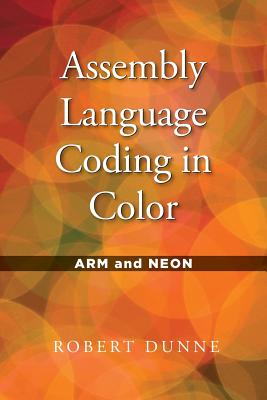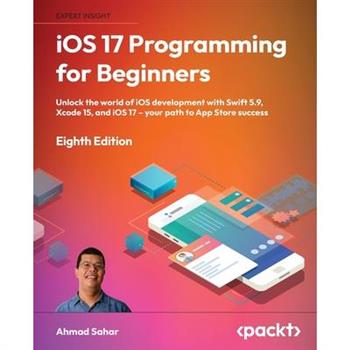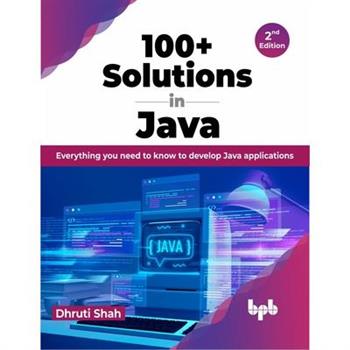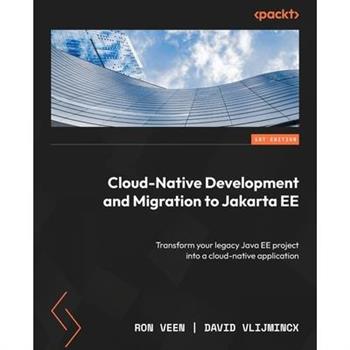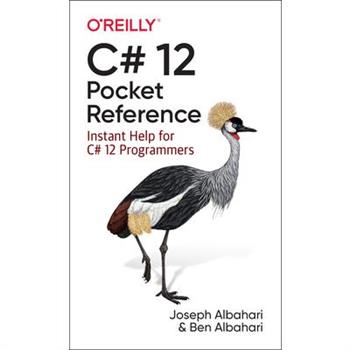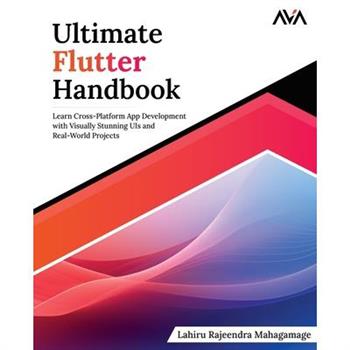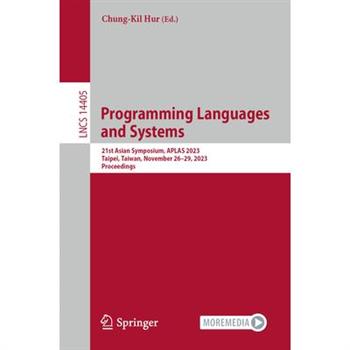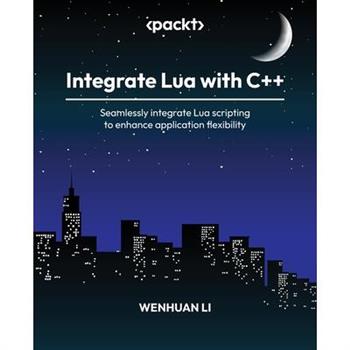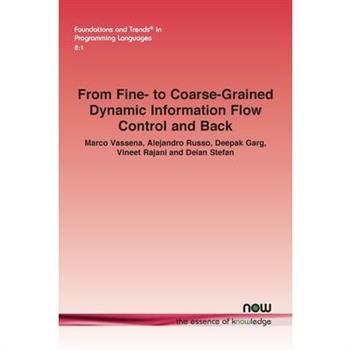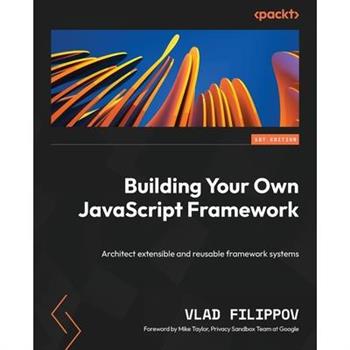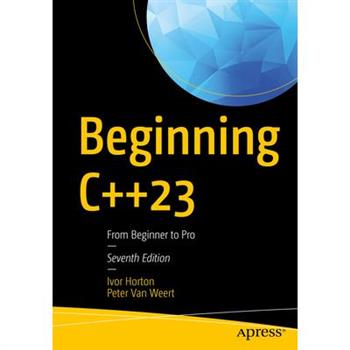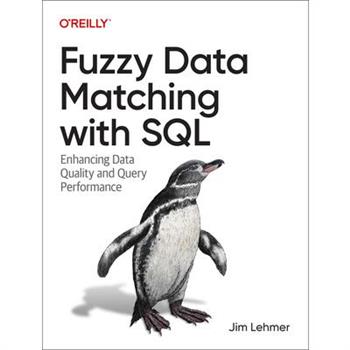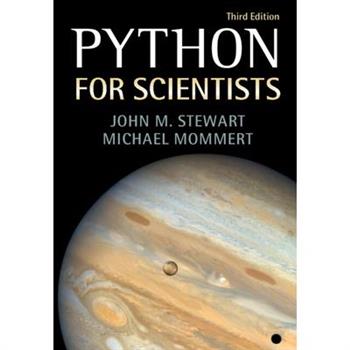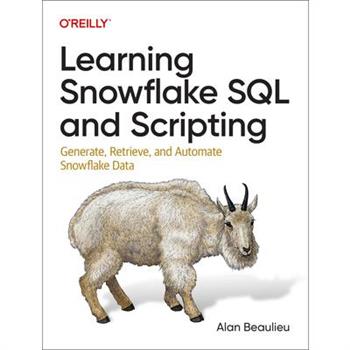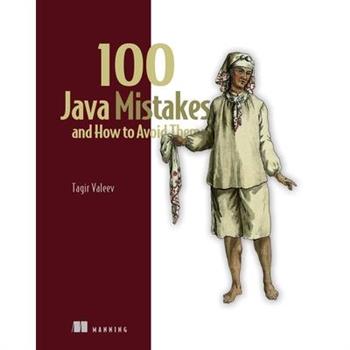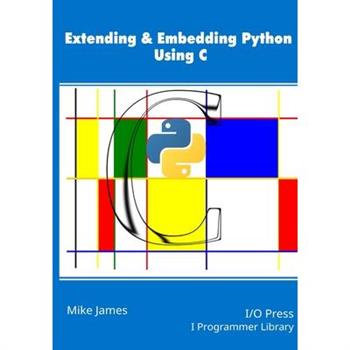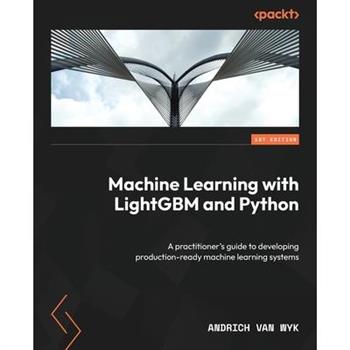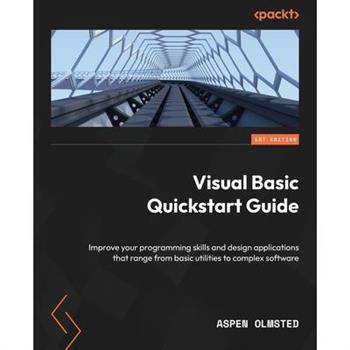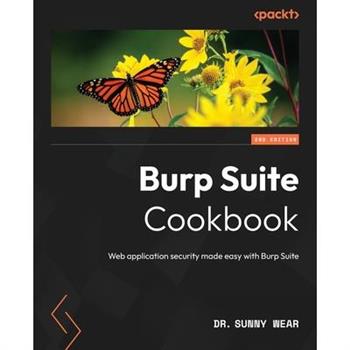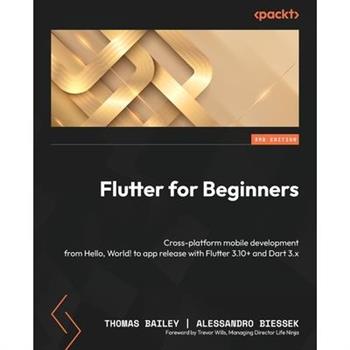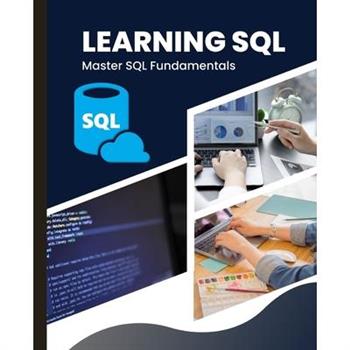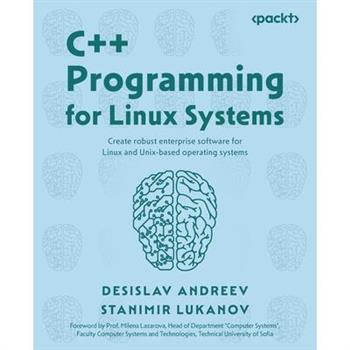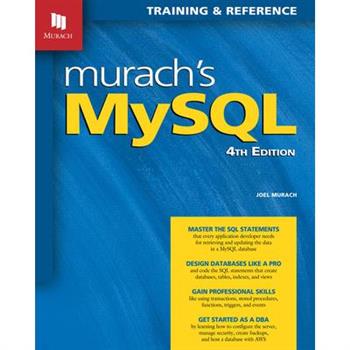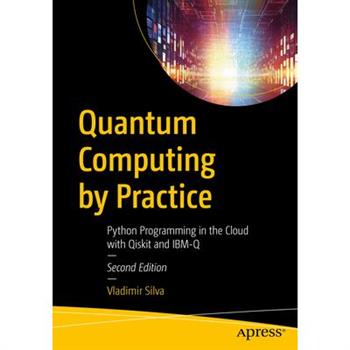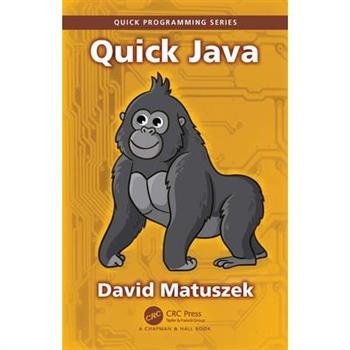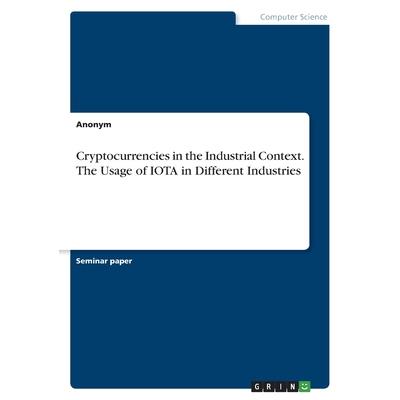Assembly Language Coding in Color
Learning to program in assembly language is an excellent hands-on introduction to computer architecture. However, assembly language has a bad reputation of being difficult to learn. Through the use of complete program examples, flow diagrams, and color codes, Assembly Language Coding in Color helps students and computer enthusiasts start on a solid path to understanding computer architecture. This tutorial introduces the novice to the basics of the ARM and NEON architectures Although the Raspberry Pi and BeagleBone Black computers are ideal platforms for this book, most other Linux-based ARM systems are also compatible Programmers learn by example and develop their skills by examining and modifying working programs. The sample programs in this book, ranging from five to over one hundred lines of code, are available for download through GitHub Many assembly language books present CPU instructions in catalog form along with snippets of coding examples. In this book, CPU instructions are introduced as needed to achieve programming goals as the projects in each chapter progress to the next Over fifty color illustrations are included to explain programming techniques as well as ARM and NEON instructions. Programming examples and flow diagrams are color coded to help "connect" concepts to implementation Topics like binary and hexadecimal are introduced through programming examples as well as appearing in appendices. The examples in this book have been "classroom tested" with students having very little, if any, previous programming experience. The information is complete, allowing it to be used as an independent study Is a book in color worth twice the production print costs of one in black and white? It is for those students struggling to get a working knowledge of a subject where they need to connect concepts to implementation. Learning computer architecture through hands-on assembly language programming experience helps develop well-rounded programmers and computer engineers.
iOS 17 Programming for Beginners - Eighth Edition
Embark on an exciting iOS app development journey with Swift 5.9, Xcode 15, and iOS 17. This hands-on guide equips you with the skills to create captivating apps and thrive in the competitive App Store landscape.Purchase of the print or Kindle book includes a free eBook in PDF format.Key Features: Dive into the latest iOS 17 features and Swift 5.9 through hands-on projectsDevelop robust apps with top design patterns used by professionalsExpand your app's reach by effortlessly converting it for iPad, Mac, and visionOSBook Description: In a world with nearly 2 million apps on the App Store, the demand for skilled iOS developers has never been higher. "iOS 17 Programming for Beginners, Eighth Edition" is your gateway to this lucrative and dynamic field. This hands-on guide is tailored for those who are new to iOS and takes you on a journey from learning the Swift language to crafting your own app and seeing it thrive on the App Store.Our approach is hands-on and practical. Each chapter is designed to be a stepping stone in your development journey, providing step-by-step tutorials, real-life examples, and clear explanations of complex concepts. As you progress, you'll not only be skilled in Swift but also incorporate cutting-edge technologies into your apps. You'll learn how to publish your creations and harness the power of iOS 17 through a straightforward and easy to program example app divided into manageable parts.By the time you've completed this book, you'll possess the skills and knowledge to not only develop and publish captivating apps but also leverage online resources to continually enhance your app development prowess.What You Will Learn: Discover the world of Xcode 15 and Swift 5.9, laying the foundation for your iOS development journeyImplement the latest iOS 17 features through a hands-on example app, ensuring your apps remain innovative and engagingBuild and deploy iOS apps using industry-standard design patterns and best practices.Implement the Model-View-Controller (MVC) design pattern to create robust and organized applicationsExpand your app's reach by effortlessly converting it for iPad, Mac, and visionOSDive into UIKit, the essential framework for large-scale iOS projectsWho this book is for: This book is tailored for individuals with minimal coding experience who are new to the world of Swift and iOS app development. A basic understanding of programming concepts is recommended.
100+ Solutions in Java
100+ Solutions in Java is a comprehensive and accessible guide to developing Java applications from version 8 to 19. Whether you are a beginner or a seasoned pro, this book will help you learn the latest Java features and best practices, one step at a time. The book covers a wide range of topics, from basic programming concepts to advanced topics like concurrency and design patterns. Each chapter has clear and concise explanations, helpful examples, and practical exercises.
Cloud-Native Development and Migration to Jakarta EE
Cloud-Native Development and Migration to Jakarta EE will help you unlock the secrets of Jakarta EE's evolution as you explore the migration and modernization of your applications. You'll discover how to make your code compatible with the latest Jakarta EE version and how to leverage its modern features effectively. First, you'll navigate the realm of cloud-native development as you demystify containers and get introduced to the Eclipse MicroProfile, a powerful tool in your toolkit. Next, you'll take the bold step of transitioning your applications from local hardware to the limitless possibilities of the cloud. By following the author's expert guidance to deploy your Jakarta EE applications on Microsoft Azure, you'll gain hands-on experience in managing cloud resources. In the final leg of your journey, you'll explore the world of serverless architecture. You'll learn to design and run services that are truly serverless, harnessing the potential of the event-driven paradigm for scalability and cost-efficiency. By the end of this book, you'll have mastered Jakarta EE and become a proficient cloud-native developer. Join us on this exciting journey of transformation and innovation as you pave the way for the future of Jakarta EE and cloud-native development.
C# 12 Pocket Reference
Looking for quick answers for using C# 12? This tightly focused and practical guide tells you exactly what you need to know without long intros or bloated samples. Succinct and easy to browse, this pocket reference is an ideal quick source of information. If you know Java, C++, or an earlier C# version, this guide will help you get rapidly up to speed. All programs and code snippets are available as interactive samples in LINQPad. You can edit these samples and instantly see the results without needing to set up projects in Visual Studio.
Ultimate Flutter Handbook
DESCRIPTIONFlutter Handbook is the t to becoming a proficient Flutter app developer, catering to all levels, from beginners to experts. This comprehensive guide takes you by the hand, providing step-by-step instructions on every aspect of Flutter app development. Starting from the basics, you'll learn how to install and run Flutter, as well as core concepts such as widgets, state management, and navigation. As you progress, the book delves deep into advanced topics, such as implementing CRUD (Create, Read, Update, Delete) functions using Firebase Firestore. Flutter Handbook is more than just a tutorial book. It also provides invaluable tips, tricks, and small tasks at the end of each chapter to reinforce your understanding and equip you with real-world skills. By the end of this journey, you'll have the expertise to release your Flutter app to the Play Store or App Store with confidence.TABLE OF CONTENTS 1. Introduction to Flutter2. Getting Started3. Widgets Widgets Widgets!4. Stateful and Stateless Widgets5. Navigation and Routing6. Firebase Firestore with Flutter7. Futures, Awaits, and Async8. Persistence and Data Modeling9. Deploying
Learning Advanced Python by Studying Open Source Projects
This book is one of its own kind. It is not an encyclopedia or a hands-on tutorial that traps readers in the tutorial hell. It is a distillation of just one common Python user's learning experience. The experience is packaged with exceptional teaching techniques, careful dependence unraveling and, most importantly, passion.Learning Advanced Python by Studying Open Source Projects helps readers overcome the difficulty in their day-to-day tasks and seek insights from solutions in famous open source projects. Different from a technical manual, this book mixes the technical knowledge, real-world applications and more theoretical content, providing readers with a practical and engaging approach to learning Python.Throughout this book, readers will learn how to write Python code that is efficient, readable and maintainable, covering key topics such as data structures, algorithms, object-oriented programming and more. The author's passion for Python shines through in this book, making it an enjoyable and inspiring read for both beginners and experienced programmers.
Programming Languages and Systems
This book constitutes the refereed proceedings of the 21st Asian Symposium on Programming Languages and Systems, APLAS 2023, held in Taipei, Taiwan, during November 26-29, 2023. The 15 full papers included in this book are carefully reviewed and selected from 32 submissions. They were organized in topical sections as follows: semantics, logics, and foundational theory; design of languages, type systems, and foundational calculi; domain-specific languages; compilers, interpreters, and abstract machines; program derivation, synthesis, and transformation; program analysis, verification, and model-checking; logic, constraint, probabilistic, and quantum programming; software security; concurrency and parallelism; tools and environments for programming and implementation; and applications of SAT/SMT to programming and implementation.
Integrate Lua with C++
Discover the perfect synergy between C++ and Lua to create powerful, adaptable, and high-performing software solutionsKey Features: - Get hands-on experience by integrating Lua with C++- Explore real-life project-ready advanced techniques for your future projects- Learn Lua through practical coding examples and exercises- Purchase of the print or Kindle book includes a free PDF eBookBook Description: C++ is a popular choice in the developer community for building complex and large-scale performant applications and systems. Often a need arises to extend the system at runtime, without recompiling the whole C++ program. Using a scripting language like Lua can help achieve this goal efficiently.Integrate Lua to C++ is a comprehensive guide to integrating Lua to C++ and will enable you to achieve the goal of extending C++ programs at runtime. You'll learn, in sequence, how to get and compile the Lua library, the Lua programming language, calling Lua code from C++, and calling C++ code from Lua. In each topic, you'll practice with code examples, and learn the in-depth mechanisms for smooth working. Throughout the book, the latter examples build on the earlier ones while also acting as a standalone. You'll learn to implement Lua executor and Lua binding generator, which you can use in your projects directly with further customizations.By the end of this book, you'll have mastered integrating Lua into C++ and using Lua in your C++ project efficiently, gained the skills to extend your applications at runtime, and achieved dynamic and adaptable C++ development.What You Will Learn: - Explore how to access and compile Lua source code- Call Lua code from C++ for enhanced functionality- Integrate C++ code into Lua for powerful interactions- Deepen your understanding of Lua stack for advanced usage- Implement a project-ready Lua executor and binding generator- Extend C++ projects with customizable and extensible Lua scriptingWho this book is for: This book is for C++ developers seeking to seamlessly integrate Lua, learn the Lua programming language by examples, or enhance their understanding of Lua-C++ interaction. Basic knowledge of C++ is required to fully benefit from this book.Table of Contents- Get and Build Lua with C++- Lua Fundamentals- How to Call Lua from C++- Map Lua Types to C++- Work with Lua Tables- How to Call C++ from Lua- User Defined Types in C++- A C++ Template Class to Export C++ to Lua- Some Advanced Techniques- Managing Resources- Multithreading
Enhancing Virtual Reality Experiences with Unity 2022
Unlock your creativity with this part-color guide to VR projects in Unity, crafting immersive games, refining VR experiences, and leading XR developmentKey Features: - Understand the fundamentals and build a solid foundation in XR development- Develop technical skills for building VR experiences in Unity, including assets, GameObjects, scripts, and components- Create engaging and innovative virtual reality projects using the Unity game engine- Purchase of the print or Kindle book includes a free PDF eBookBook Description: Virtual reality (VR) has emerged as one of the most transformative mediums of the 21st century, finding applications in various industries, including gaming, entertainment, and education.Enhancing Virtual Reality Experiences with Unity 2022 takes you into the fascinating realm of VR, where creativity meets cutting-edge technology to bring tangible real-world applications to life. This immersive exploration not only equips you with the essential skills needed to craft captivating VR environments using Unity's powerful game engine but also offers a deeper understanding of the philosophy behind creating truly immersive experiences.Throughout the book, you'll work with practical VR scene creation, interactive design, spatial audio, and C# programming and prepare to apply these skills to real-world projects spanning art galleries, interactive playgrounds, and beyond. To ensure your VR creations reach their full potential, the book also includes valuable tips on optimization, guaranteeing maximum immersion and impact for your VR adventures.By the end of this book, you'll have a solid understanding of VR's versatility and how you can leverage the Unity game engine to create groundbreaking projects.What You Will Learn: - Harness the power of the Unity game engine to explore VR- Understand VR and how to integrate Unity into the general workflow- Build and test a variety of VR experiences for headsets, computers, and mobile devices- Integrate traditional game and animation tools into VR experiences- Explore worldbuilding techniques to create expansive VR environments- Integrate optimization techniques to improve the performance of your VR experiencesWho this book is for: This book is for individuals who are familiar with the Unity game engine and want to explore virtual reality. If you're a game developer, VR developer, or creator with Unity experience, this is your guide to learning the essential principles and techniques for VR development in Unity 2022. A basic understanding of the Unity user interface, navigation, and C# will help you make the most of the book.Table of Contents- Philosophy of Building Immersive Experiences- Building Virtual Reality Scenes in Unity- Working with Inputs and Interactions- Using GameObjects, Materials, and Prefabs- Implementing Animation - Physics and Colliders- Lighting Your Worlds and Experiences- Creating Immersion with Sound- Working with C#, Unity Events, and Input Assets- Unlocking the Power of Render Pipelines- Design Thinking for Virtual Reality Experiences- Adding Audio to a Virtual Reality World- Building an Art Gallery- Animating a Virtual Reality Experience- Recording Virtual Reality Videos- Enhancing Virtual Reality Rigs- Triggering Actions in Virtual Reality- Destroying Objects in Virtual Reality- Optimizing Your Virtual Reality Experiences
From Fine- to Coarse-Grained Dynamic Information Flow Control and Back
Dynamic information-flow control (IFC) is a principled approach to protecting the confidentiality and integrity of data in software systems. This tutorial provides a complete and homogeneous account of the latest advances in fine- and coarse-grained dynamic information-flow control security. Written for students, practitioners and researchers, the authors first introduce both fine- and coarse-grained IFC in a gentle and accessible way, laying the groundwork for subsequent chapters. They proceed to show that, contrary to common belief, the granularity of the tracking system is not a fundamental feature of IFC systems and hence does not restrict how precise or permissive dynamic IFC systems can be. To achieve this, the authors demonstrate practical examples of both Fine to Coarse-Grained and Coarse- to Fine-Grained Program Translation. This tutorial will give readers the insights required to understand, develop and implement dynamic information-flow control to improve the security of a wide variety of software systems.
Building Your Own JavaScript Framework
Learn how to craft elegant and well-structured software frameworks in a variety of JavaScript environments with this handy guideKey Features: Explore the gateway to the constantly evolving world of JavaScript frameworksNavigate the JavaScript development landscape and discover crucial software architecture patternsBuild your own framework for a variety of work-related projectsPurchase of the print or Kindle book includes a free PDF eBookBook Description: JavaScript frameworks play an essential role in web application development; however, no single framework works perfectly for all projects. This book will help you understand existing projects, design new software architecture, and maintain projects as they grow. You'll go through software architecture principles with JavaScript, along with a guided example of structuring your project and maintenance guidance.This book covers framework planning aspects, enabling you to identify key stakeholders, understand JavaScript API design, and leverage complex abstraction. The second part of the book takes a practical programming approach to building your own framework by showing you how to structure modules and interfaces. As you advance, you'll discover how to develop data-binding components, work with JavaScript APIs, and much more. While writing a framework is half the job, continuing to develop it requires effort from everyone involved. The concluding chapters help to achieve this by teaching you the crucial aspects of software maintenance and highlighting the constants of framework development.By the end of this book, you'll have gained a clear understanding of the JavaScript framework landscape, along with the ability to build frameworks for your use cases.What You Will Learn: Expand your knowledge of JavaScript frameworks within different runtimes and ecosystemsGet to grips with the technical aspects of structuring framework abstractions in JavaScriptGain an understanding of common patterns across various existing frameworksDiscover the usage of existing tooling such as TypeScript and GraphQLConfigure performance tests for your project and track down bottlenecks in the code baseUnderstand how JavaScript and the web evolve and what these systems will look like in the coming yearsWho this book is for: If you're a JavaScript novice or an expert who wants to explore the world of JavaScript frameworks, this book is for you. This book introduces you to the history of frontend frameworks and guides you through the creation of your own framework. The chapters are designed to help developers build large projects for their full-time jobs and programmers who want to create open-source projects. A clear understanding of the JavaScript programming language as well as experience with existing software frameworks are all prerequisites.
Beginning C++23
Begin your programming journey with C++, starting with the basics and progressing through step-by-step examples that will help you become a proficient C++ programmer. This book includes new features from the C++23 standard. All you need are Beginning C++23 and any recent C++ compiler and you'll soon be writing real C++ programs. There is no assumption of prior programming knowledge. All language concepts that are explained in the book are illustrated with working program examples, and all chapters include exercises for you to test and practice your knowledge. Free source code downloads are provided for all examples from the text and solutions to the exercises. This latest edition has been fully updated to the latest version of the language, C++23, and to all conventions and best practices of modern C++. This book also introduces elements of the C++ Standard Library that provide essential support for C++23. After completing this book, you will have the knowledge and skills needed to build your first C++ applications. What You Will LearnBegin programming with the C++23 standardCarry out modular programming in C++Work with arrays and loops, pointers and references, strings, and moreWrite your own functions, types, and operatorsDiscover the essentials of object-oriented programmingUse overloading, inheritance, virtual functions, and polymorphismWrite generic function and class templates, and make them safer using concepts Learn the ins and outs of containers, algorithms, and rangesUse auto type declarations, exceptions, move semantics, lambda expressions, and much moreWho This Book Is ForProgrammers new to C++ and those who may be looking for a refresh primer on C++ in general.
Data Parallel C++
"This book, now in is second edition, is the premier resource to learn SYCL 2020 and is the ONLY book you need to become part of this community." Erik Lindahl, GROMACS and Stockholm UniversityLearn how to accelerate C++ programs using data parallelism and SYCL.This open access book enables C++ programmers to be at the forefront of this exciting and important development that is helping to push computing to new levels. This updated second edition is full of practical advice, detailed explanations, and code examples to illustrate key topics. SYCL enables access to parallel resources in modern accelerated heterogeneous systems. Now, a single C++ application can use any combination of devices-including GPUs, CPUs, FPGAs, and ASICs-that are suitable to the problems at hand. This book teaches data-parallel programming using C++ with SYCL and walks through everything needed to program accelerated systems. The book begins by introducing data parallelism and foundational topics for effective use of SYCL. Later chapters cover advanced topics, including error handling, hardware-specific programming, communication and synchronization, and memory model considerations. All source code for the examples used in this book is freely available on GitHub. The examples are written in modern SYCL and are regularly updated to ensure compatibility with multiple compilers. What You Will Learn Accelerate C++ programs using data-parallel programmingUse SYCL and C++ compilers that support SYCLWrite portable code for accelerators that is vendor and device agnosticOptimize code to improve performance for specific acceleratorsBe poised to benefit as new accelerators appear from many vendorsWho This Book Is For New data-parallel programming and computer programmers interested in data-parallel programming using C++This is an open access book.
Fuzzy Data Matching with SQL
If you were handed two different but related sets of data, what tools would you use to find the matches? What if all you had was SQL SELECT access to a database? In this practical book, author Jim Lehmer provides best practices, techniques, and tricks to help you import, clean, match, score, and think about heterogeneous data using SQL. DBAs, programmers, business analysts, and data scientists will learn how to identify and remove duplicates, parse strings, extract data from XML and JSON, generate SQL using SQL, regularize data and prepare datasets, and apply data quality and ETL approaches for finding the similarities and differences between various expressions of the same data. Full of real-world techniques, the examples in the book contain working code. You'll learn how to: Identity and remove duplicates in two different datasets using SQL Regularize data and achieve data quality using SQL Extract data from XML and JSON Generate SQL using SQL to increase your productivity Prepare datasets for import, merging, and better analysis using SQL Report results using SQL Apply data quality and ETL approaches to finding similarities and differences between various expressions of the same data
Python for Scientists
The third edition of this practical introduction to Python has been thoroughly updated, with all code migrated to Jupyter notebooks. The notebooks are available online with executable versions of all of the book's content (and more). The text starts with a detailed introduction to the basics of the Python language, without assuming any prior knowledge. Building upon each other, the most important Python packages for numerical math (NumPy), symbolic math (SymPy), and plotting (Matplotlib) are introduced, with brand new chapters covering numerical methods (SciPy) and data handling (Pandas). Further new material includes guidelines for writing efficient Python code and publishing code for other users. Simple and concise code examples, revised for compatibility with Python 3, guide the reader and support the learning process throughout the book. Readers from all of the quantitative sciences, whatever their background, will be able to quickly acquire the skills needed for using Python effectively.
Learning Snowflake SQL and Scripting
To help you on the path to becoming a Snowflake pro, this concise yet comprehensive guide reviews fundamentals and best practices for Snowflake's SQL and Scripting languages. Developers and data professionals will learn how to generate, modify, and query data in the Snowflake relational database management system as well as how to apply analytic functions for reporting. Author Alan Beaulieu also shows you how to create scripts, stored functions, and stored procedures to return data sets using Snowflake Scripting. This book is ideal whether you're new to databases and need to run queries or reports against a Snowflake database, or transitioning from databases such as Oracle, SQL Server, or MySQL to cloud-based platforms. With this book, you will: Generate and modify Snowflake data using Insert, Update, Delete Query data in Snowflake using Select, including joining multiple tables, using subqueries, and grouping Apply analytic functions for performing subtotals, grand totals, row comparisons, and other reporting functionality Build scripts combining SQL statements with looping, if-then-else, and exception handling Learn how to build stored procedures and functions Use stored procedures to return data sets
100 Java Mistakes and How to Avoid Them
Dodge the common mistakes that even senior developers make, take full advantage of static analysis tools, and deliver robust and error-free Java code. Whenever you make a mistake writing Java, it's almost guaranteed that someone else has made it before! In 100 Java Mistakes and How To Avoid Them you'll learn about the common and the not-so-common antipatterns, errors, and tricky bits that trip up almost every Java developer. Inside 100 Java Mistakes and How To Avoid Them you will learn how to: Write better Java programs Recognize common mistakes during programming Create fewer bugs and save time for debugging and testing Get help from static analyzers during programming Configure static analysis tools to reduce the number of false reports Extend static analysis tools with custom plugins Each Java mistake in this handy guide comes with an illustrative code sample, an explanation of why the mistake occurs, and an actionable "ways to avoid this" section to help you dodge the error. Plus, you'll benefit from useful static analysis sidebars that let you know when mistakes will--and won't--be spotted by static analysis tools. Purchase of the print book includes a free eBook in PDF, Kindle, and ePub formats from Manning Publications. Foreword by Cay Horstmann. About the technology Minor bugs in development can become major problems in production. It's much better to spot and fix your mistakes before they get that far! This one-of-a-kind book shines a light on the most common Java slip-ups and shows you exactly how to avoid making them in the first place. About the book 100 Java Mistakes and How To Avoid Them highlights 100 Java coding errors--from beginner missteps to mistakes even Java experts don't know they're making. Each case includes clear examples to show you what to look for and concrete troubleshooting advice. You'll learn to use static analysis tools like IntelliJ IDEA and SonarLint to ensure you're consistently delivering exceptional Java, discover how unit tests and defensive coding can keep your code clean, and even learn to write your own bug-busting plugins. What's inside Recognize bugs and antipatterns during programming Highly-effective debugging and testing Get help from static analyzers About the reader For Java developers of all skill levels. About the author Tagir Valeev is a technical lead in JetBrains and a Java Champion. He designed and developed many code inspections for IntelliJ IDEA built-in static analyzer. The technical editor on this book was Jean-Fran癟ois Morin. Table of Contents 1 Managing code quality 2 Expressions 3 Program structure 4 Numbers 5 Common exceptions 6 Strings 7 Comparing objects 8 Collections and maps 9 Library methods 10 Unit testing A Static analysis annotations B Extending static analysis tools
Extending & Embedding Python Using C
Writing a C extension for Python is good for fun and profit! The fun part is that adding Python to C gives you so much more power and a deeper understanding of how Python works. The internals of Python are worth knowing about because they suggest new approaches to other problems. As well as being interesting, it is also a valuable skill. Extending & Embedding Python Using C tells you everything you need to know about the C API, which is what you use to create an extension. It is essentially the Python runtime and so exploring it tells you a lot about Python. You don't need to be an expert Python programmer to create an extension, but it helps. As you are going to be writing mostly C code, programming in C is a more important skill for this task. While you don't have to be a C expert, you do need to be reasonably competent and C aficionados will enjoy finding out about some of the clever techniques in use in the C API. Extending Python is a way of bringing any C-based application or library to a much wider audience. Converting Python functions into C functions is also a way of speeding things up. Moreover, you can provide access to hardware or system features that are usually inaccessible by creating an extension. The final chapter explains how to convert the skills you have gained in creating a Python extension to embed Python in a C program. This is a less common requirement, but it has some interesting advantages and possibilities and once you know how to create a Python extension it is easy. Mike James has a BSc in Physics, an MSc in Mathematics, a PhD in Computer Science and in a long career as a programmer he has mastered many programming languages. He is the founder and chief editor of I-Programmer, the online magazine written by programmers for programmers and the author of dozens of books. His previous three books on Python, Programmer's Python: Everything Is An Object, Programmer's Python: Everything Is Data and Programmer's Python: Async form a set of "Something Completely Different" books that look at what makes Python special and sets it apart from other programming languages. While not part of the series, this book shares the same overall philosophy.
SQL Server Database Programming with C#
Databases have become an integral part of modern-day life. We live in an information-driven society and database technology has a direct impact on our daily lives. Decisions are routinely made by organizations based on the information collected and stored in the databases. Because databases play such an important role in business and society, database programming is a key skill.SQL Server Database Programming with C#: Desktop and Web Applications is for college students and software programmers who want to develop practical and commercial skills in database programming with C# or Visual C#.NET 2022 as well as the relational database Microsoft SQL Server 2019. The book explains the practical considerations and applications in database programming with Visual C# 2022 and provides realistic examples and detailed explanations. A direct writing style is combined with real-world examples to provide readers with a clear picture of how to handle database programming issues in the Visual C#.NET 2022 environment.Highlights include: A complete sample database CSE_DEPT, built with Microsoft SQL Server 2019 Express, is provided and used for the entire book. Step-by-step, detailed illustrations and descriptions show how to design and build a practical relational database. Both fundamental and advanced database-programming techniques are covered to benefit beginning students and experienced programmers. An advanced database query technique, LINQ API, which includes LINQ to Objects, LINQ to DataSet, LINQ to SQL, LINQ to Entities and LINQ to XML, is discussed, analyzed, and implemented in actual projects with line-by-line explanations. Homework and class projects are provided for each chapter to strengthen and improve students' abilities to learn and understand the topics they studied. PowerPoint teaching slides and selected homework solutions help instructors to teach and organize their classes easily and effectively. Useful and practical, this textbook is an intuitive guide on how to develop and build professional and practical database applications.
Machine Learning with LightGBM and Python
Take your software to the next level and solve real-world data science problems by building production-ready machine learning solutions using LightGBM and PythonKey Features: Get started with LightGBM, a powerful gradient-boosting library for building ML solutionsApply data science processes to real-world problems through case studiesElevate your software by building machine learning solutions on scalable platformsPurchase of the print or Kindle book includes a free PDF eBookBook Description: Machine Learning with LightGBM and Python is a comprehensive guide to learning the basics of machine learning and progressing to building scalable machine learning systems that are ready for release.This book will get you acquainted with the high-performance gradient-boosting LightGBM framework and show you how it can be used to solve various machine-learning problems to produce highly accurate, robust, and predictive solutions.Starting with simple machine learning models in scikit-learn, you'll explore the intricacies of gradient boosting machines and LightGBM. You'll be guided through various case studies to better understand the data science processes and learn how to practically apply your skills to real-world problems.As you progress, you'll elevate your software engineering skills by learning how to build and integrate scalable machine-learning pipelines to process data, train models, and deploy them to serve secure APIs using Python tools such as FastAPI.By the end of this book, you'll be well equipped to use various state-of-the-art tools that will help you build production-ready systems, including FLAML for AutoML, PostgresML for operating ML pipelines using Postgres, high-performance distributed training and serving via Dask, and creating and running models in the Cloud with AWS Sagemaker.What You Will Learn: Get an overview of ML and working with data and models in Python using scikit-learnExplore decision trees, ensemble learning, gradient boosting, DART, and GOSSMaster LightGBM and apply it to classification and regression problemsTune and train your models using AutoML with FLAML and OptunaBuild ML pipelines in Python to train and deploy models with secure and performant APIsScale your solutions to production readiness with AWS Sagemaker, PostgresML, and DaskWho this book is for: This book is for software engineers aspiring to be better machine learning engineers and data scientists unfamiliar with LightGBM, looking to gain in-depth knowledge of its libraries. Basic to intermediate Python programming knowledge is required to get started with the book.The book is also an excellent source for ML veterans, with a strong focus on ML engineering with up-to-date and thorough coverage of platforms such as AWS Sagemaker, PostgresML, and Dask.
Learning Professional Python
Volume 1 of Learning Professional Python is a resource for students who want to learn Python even if they don't have any programming knowledge and for teachers who want a comprehensive introduction to Python to use with their students. This book helps the students achieve their dream job in IT Industry and teaches the students in an easy, understandable manner while strengthening coding skills.Learning Professional Python: Volume 1 Objectives Become familiar with the features of Python programming language Introduce the object-oriented programming concepts Discover how to write Python code by following the object-oriented programming concepts Become comfortable with concepts such as classes, objects, inheritance, dynamic dispatch, interfaces, and packages Learn the Python generics and collections Develop exception handling and the multithreaded applications Design graphical user interface (GUI) applications
Designing Hexagonal Architecture with Java - Second Edition
Learn to build robust, resilient, and highly maintainable cloud-native Java applications with hexagonal architecture and QuarkusKey Features: Use hexagonal architecture to increase maintainability and reduce technical debtLearn how to build systems that are easy to change and understandLeverage Quarkus to create modern cloud-native applicationsPurchase of the print or Kindle book includes a free PDF eBookBook Description: We live in a fast-evolving world with new technologies emerging every day, where enterprises are constantly changing in an unending quest to be more profitable. So, the question arises - how to develop software capable of handling a high level of unpredictability. With this question in mind, this book explores how the hexagonal architecture can help build robust, change-tolerable, maintainable, and cloud-native applications that can meet the needs of enterprises seeking to increase their profits while dealing with uncertainties. This book starts by uncovering the secrets of the hexagonal architecture's building blocks, such as entities, use cases, ports, and adapters. You'll learn how to assemble business code in the domain hexagon, create features with ports and use cases in the application hexagon, and make your software compatible with different technologies by employing adapters in the framework hexagon. In this new edition, you'll learn about the differences between a hexagonal and layered architecture and how to apply SOLID principles while developing a hexagonal system based on a real-world scenario. Finally, you'll get to grips with using Quarkus to turn your hexagonal application into a cloud-native system.By the end of this book, you'll be able to develop robust, flexible, and maintainable systems that will stand the test of time.What You Will Learn: Apply SOLID principles to the hexagonal architectureAssemble business rules algorithms using the specified design patternCombine domain-driven design techniques with hexagonal principles to create powerful domain modelsEmploy adapters to enable system compatibility with various protocols such as REST, gRPC, and WebSocketCreate a module and package structure based on hexagonal principlesUse Java modules to enforce dependency inversion and ensure software component isolationImplement Quarkus DI to manage the life cycle of input and output portsWho this book is for: This book is for software architects and Java developers looking to improve code maintainability and enhance productivity with an architecture that allows changes in technology without compromising business logic. Intermediate knowledge of the Java programming language and familiarity with Jakarta EE will help you to get the most out of this book.
Visual Basic Quickstart Guide
Master software development with Visual Basic, from core concepts to real-world applications, with this comprehensive guideKey Features: Acquire a solid understanding of object-oriented programming (OOP) principles, such as inheritance and polymorphismDevelop expertise in maintaining legacy code with increased efficiencyLearn to read, write, and differentiate between VB Script, VBA, VB Classic, and VB.NET CodePurchase of the print or Kindle book includes a free PDF eBookBook Description: Whether you're an absolute beginner or an experienced developer looking to learn the Visual Basic language, this book takes a hands-on approach to guide you through the process. From the very first chapters, you'll delve into writing programs, exploring core concepts such as data types, decision branching, and iteration. Additionally, you'll get to grips with working with data structures, file I/O, and essential object-oriented principles like inheritance and polymorphism.This book goes beyond the basics to equip you with the skills to read and write code across the entire VB family, spanning VB Script, VBA, VB Classic, and VB.NET, enabling you to handle legacy code maintenance with ease.With clear explanations, practical examples, and hands-on exercises, this book empowers you to tackle real-world software development tasks, whether you're enhancing existing projects or embarking on new ones. It addresses common challenges like distinguishing between the variations of the VB programming language to help you choose the right one for your projects.Don't let VB's extensive legacy daunt you; embrace it with this comprehensive guide that equips you with practical, up-to-date coding skills to overcome the challenges presented by Visual Basic's rich history of over two decades.What You Will Learn: Acquire a solid understanding of object-oriented programming (OOP) principles, such as inheritance and polymorphismDevelop expertise in maintaining legacy code with increased efficiencyLearn to read, write, and differentiate between Visual Baic Script, Visual Baic for Applications, Visual Baic Classic, and VB.NET CodePurchase of the print or Kindle book includes a free PDF e-bookWho this book is for: If you're a software developer or web developer either already engaged in or aspiring to be involved in maintaining, enhancing, administering, and defending visual basic programs, websites, and scripts, this book is for you. It's an excellent resource for beginners in software development who want to learn Visual Basic from scratch.
Burp Suite Cookbook - Second Edition
Find and fix security vulnerabilities in your web applications with Burp SuiteKey FeaturesSet up and optimize Burp Suite to maximize its effectiveness in web application security testingExplore how Burp Suite can be used to execute various OWASP test casesGet to grips with the essential features and functionalities of Burp SuitePurchase of the print or Kindle book includes a free PDF eBookBook DescriptionWith its many features, easy-to-use interface, and flexibility, Burp Suite is the top choice for professionals looking to strengthen web application and API security.This book offers solutions to challenges related to identifying, testing, and exploiting vulnerabilities in web applications and APIs. It provides guidance on identifying security weaknesses in diverse environments by using different test cases. Once you've learned how to configure Burp Suite, the book will demonstrate the effective utilization of its tools, such as Live tasks, Scanner, Intruder, Repeater, and Decoder, enabling you to evaluate the security vulnerability of target applications. Additionally, you'll explore various Burp extensions and the latest features of Burp Suite, including DOM Invader.By the end of this book, you'll have acquired the skills needed to confidently use Burp Suite to conduct comprehensive security assessments of web applications and APIs.What you will learnPerform a wide range of tests, including authentication, authorization, business logic, data validation, and client-side attacksUse Burp Suite to execute OWASP test cases focused on session managementConduct Server-Side Request Forgery (SSRF) attacks with Burp SuiteExecute XML External Entity (XXE) attacks and perform Remote Code Execution (RCE) using Burp Suite's functionalitiesUse Burp to help determine security posture of applications using GraphQLPerform various attacks against JSON Web Tokens (JWTs)Who this book is forIf you are a beginner- or intermediate-level web security enthusiast, penetration tester, or security consultant preparing to test the security posture of your applications and APIs, this is the book for you.Table of ContentsGetting Started with Burp SuiteGetting to Know the Burp Suite of ToolsConfiguring, Crawling, Auditing, and Reporting with BurpAssessing Authentication SchemesAssessing Authorization ChecksAssessing Session Management MechanismsAssessing Business LogicEvaluating Input Validation ChecksAttacking the ClientWorking with Burp Suite Macros and ExtensionsImplementing Advanced Topic Attacks
Learning and Operating Presto
The Presto community has mushroomed since its origins at Facebook in 2012. But ramping up this open source distributed SQL query engine can be challenging even for the most experienced engineers. With this practical book, data engineers and architects, platform engineers, cloud engineers, and software engineers will learn how to use Presto operations at your organization to derive insights on datasets wherever they reside. Authors Angelica Lo Duca, Tim Meehan, Vivek Bharathan, and Ying Su explain what Presto is, where it came from, and how it differs from other data warehousing solutions. You'll discover why Facebook, Uber, Alibaba Cloud, Hewlett Packard Enterprise, IBM, Intel, and many more use Presto and how you can quickly deploy Presto in production. With this book, you will: Learn how to install and configure Presto Use Presto with business intelligence tools Understand how to connect Presto to a variety of data sources Extend Presto for real-time business insight Learn how to apply best practices and tuning Get troubleshooting tips for logs, error messages, and more Explore Presto's architectural concepts and usage patterns Understand Presto security and administration
Flutter for Beginners - Third Edition
Follow this step-by-step illustrated guide to launch your own Flutter apps and gain hands-on experienceKey Features: Get up to speed with the basics of Dart programming and delve into Flutter developmentLearn about Flutter widgets, plugins, and animations to create a high-quality, user-friendly appPackage and deploy your Flutter apps to achieve native-like performancePurchase of the print or Kindle book includes a free PDF eBookBook Description: There have been many attempts at creating frameworks that are truly cross-platform, but most struggle to create a native-like experience at high-performance levels. Flutter achieves this with an elegant design and a wealth of third-party plugins, solidifying its status as the future of mobile app development. If you are a mobile developer who wants to create rich and expressive native apps with the latest Google Flutter framework, this book is for you.You'll start with the basics of cross-platform development frameworks, specifically Flutter. You'll then explore the Dart programming language which is the foundation of the Flutter framework. Next, you'll get a feel for Flutter and how to create your first app, followed by an exploration of the various popular plugins that supplement the Flutter framework. Finally, you'll explore testing and app release, including some common glitches that you may experience.By the end of this book, you'll be well-equipped to create and release a basic Flutter app along with gaining a solid understanding of the Flutter framework and Dart language.What You Will Learn: Understand the Flutter framework and cross-platform developmentAcclimate the fundamentals of the Dart programming languageExplore Flutter widgets, the core widget library, and stateful and stateless widgetsDiscover the complete development lifecycle, including testing and debuggingGet familiar with both the mobile and web app release processesDig deeper into more advanced Flutter concepts like animationExplore common Flutter plugins ad how to use themDiscover the Flutter community and how to stay up-to-dateWho this book is for: If you are an existing mobile developer seeking a better way to develop cross-platform apps, an existing software developer looking to explore mobile app development, or someone investigating mobile apps and simply wants to know what the Flutter fuss is about, this is the book for you. Prior knowledge of Flutter and Dart is not required.
SQL Performance Tuning
Welcome to "SQL Performance Tuning: Proven Strategies for Optimizing Queries." In today's data-driven world, SQL query speed and efficiency are paramount. Whether you're a seasoned database pro or just starting your SQL journey, optimizing queries is essential. This book is your comprehensive guide to mastering SQL performance tuning. It equips you with the knowledge and techniques to boost your SQL queries' speed and efficiency. We begin by exploring why SQL performance matters and introducing core optimization concepts. You'll learn to identify bottlenecks and apply essential strategies. With hands-on examples and case studies, you'll tackle real-world SQL performance challenges, covering index tuning, storage optimization, and more. "SQL Performance Tuning: Proven Strategies for Optimizing Queries." empowers you to unlock your queries' full potential, delivering faster, more efficient solutions. Get ready to elevate your SQL performance. Let's optimize your queries and excel in the world of data.
Learning SQL
Welcome to the book "Learning SQL: Master SQL Fundamentals"! SQL (Structured Query Language) is the most powerful and widely used database management language in the world. It is an indispensable tool for anyone working with data, from beginners to experts in the fields of information technology and database administration. This book is specially designed to help you gain a deeper understanding of SQL and master its fundamental concepts. We will guide you step by step through the essential aspects of SQL, from querying data to creating and managing tables, joining tables, aggregating data, and many other aspects of this language. Whether you are a beginner looking to learn SQL or an expert looking to refresh your knowledge, "Learning SQL: Master SQL Fundamentals" is a valuable resource for you. Let's embark on the journey of exploring SQL and becoming an expert in data management and querying. We hope this book helps you build a strong foundation in this field and achieve success in your career. Enjoy your reading and find it useful!
Python All-In-One for Dummies
Everything you need to know to get into Python coding, with 7 books in one Python All-in-One For Dummies is your one-stop source for answers to all your Python questions. From creating apps to building complex web sites to sorting big data, Python provides a way to get the work done. This book is great as a starting point for those new to coding, and it also makes a perfect reference for experienced coders looking for more than the basics. Apply your Python skills to data analysis, learn to write AI-assisted code using GitHub CoPilot, and discover many more exciting uses for this top programming language. Get started coding in Python--even if you're new to computer programming Reference all the essentials and the latest updates, so your code is air-tight Learn how Python can be a solution for large-scale projects and big datasets Accelerate your career path with this comprehensive guide to learning PythonExperienced and would-be coders alike will love this easy-to-follow guide to learning and applying Python.
Quick Java
"We'll be doing this next project in Java."Unfortunately, you're a C++ programmer, or maybe a Python programmer. How are you going to get up to speed in a hurry? There are lots of Java books for beginners, telling you all about what a computer is and how it represents everything in bits. You don't need that. At the other extreme, there are thousand-page tomes that you aren't going to get through in a few days, if ever. You need something in-between.This book is intended to fill that gap. It's written for the programmer who doesn't need to be taught how to program, just how to do it in Java--and who needs to get started in a hurry.Java is covered from the inside out. First, all the things that go inside a class, most of which are practically identical to C++. After that, all the various and complicated kinds of classes and interfaces and how they relate to each other in large-scale programs.Testing is essential, so (unlike most Java books) JUnit is covered in detail. Then, in case you need to go in that direction, some functional programming, a little about parallel programming, and more than enough to get you started in building GUIs (graphical user interfaces) and doing animation.There's a lot in this little book and, despite my best efforts, you won't learn Java in a weekend. But it should be a good start.FEATURES Circular approach allows very fast entry into Java Full description of JUnit testing Summary of functional programming in Java Introduction to synchronization and parallel processing Extensive description of building GUIs
C++ Programming for Linux Systems
Boost your C++ skills by working through realistic examples and exploring system specificationsKey Features: Master essential skills to build robust Linux systemsExplore hands-on examples to demystify crucial development concepts, upskilling your system programming abilitiesMaster the art of creating software for Linux systems and supercharge your C++ skillsPurchase of the print or Kindle book includes a free PDF eBookBook Description: Around 35 million Linux and almost 2 billion Android users rely on C++ for everything from the simplest embedded and IoT devices to cloud services, supercomputing, and space exploration. To help you produce high-quality software, two industry experts have transformed their knowledge and experience into practical examples in system programming with C++ Programming for Linux Systems.In this book, you'll explore the latest C++20 features, while working on multiple specific use cases. You'll get familiar with the coroutines and modern approaches in concurrent and multithreaded programming. You'll also learn to reshape your thinking when analyzing system behavior in Linux (POSIX) environments. Additionally, you'll discover advanced discussions and novel solutions for complex challenges, while approaching trivial system operations with a new outlook and learning to choose the best design for your particular case.You can use this workbook as an introduction to system programming and software design in Linux or any Unix-based environment. You'll also find it useful as a guideline or a supplement to any C++ book.By the end of this book, you'll have gained advanced knowledge and skills for working with Linux or any Unix-based environment.What You Will Learn: Use C++20 features to craft elegant, efficient, and modern code for Linux systemsAcquire essential system programming skills with hands-on examplesDevelop a deep understanding of Linux programming, from embedded systems to cloud servicesTailor your applications to exploit the strengths and mitigate the weaknesses of different architecturesMerge advanced C++, system programming, Linux insights, and architecture to create exceptional softwareBoost your code quality by using system programming techniques to refine and optimize your codebaseWho this book is for: This book is for every software developer looking to improve and update their C++ development skills. Both students and professionals will find this book useful as the examples are curated to match any area of expertise and are easily adaptable. At the same time, they don't lose focus of the system specifics. A basic understanding of operating systems' interfaces is a must along with experience in software development.
Go Cookbook
Go is an increasingly popular language for programming everything from web applications to distributed network services. This practical guide provides recipes to help you unravel common problems and perform useful tasks when working with Go. Each recipe includes self-contained code solutions that you can freely use, along with a discussion of how and why they work. Programmers new to Go can quickly ramp up their knowledge while accomplishing useful tasks, and experienced Go developers can save time by cutting and pasting proven code directly into their applications. Recipes include: Creating a module Calling code from another module Returning and handling an error Converting strings to numbers (or converting numbers to strings) Modifying multiple characters in a string Creating substrings from a string Capturing string input And so much more
Functional Programming with C#
After decades of relative obscurity, functional programming is finally coming into its own. With concise, easy-to-read code that supports asynchronous, concurrent processing, aspects of functional programming have begun to appear in several traditionally object-oriented languages such as C# and Java. This practical book shows C# programmers how to use functional programming features without having to navigate an entirely new language. Because of the shared runtime environment common to C# and F# languages, it's possible to use most of F#'s functional features in C# as well. Author Simon J. Painter explains how you can write functional code in C# right away, without having to install dependencies or features newer than .NET 3. You'll learn why functional programming concepts can bring immediate benefit to your work. Learn what functional programming is and how it originated Discover features of the functional paradigm using a more familiar language Start coding functionally in C# right away, without relying on third-party libraries Write code that's more robust, less error prone, and easier to test Examine less conventional ways to look at structures available in C# Explore the practicalities of using functional C# in a business environment
Learn Coding with Python and JavaScript
Whether on the computer, tablet, mobile phone, in the car or in the coffee machine - computer programs determine our everyday life. Software is becoming increasingly important, hardly anything works without the mysterious power of algorithms. But how do programs work? And how do you develop them? This book teaches you the basics of programming. Using everyday examples, you will first learn the basic concepts of programming, which are similar in all programming languages. Based on these basic ideas, you will then learn two popular and very useful programming languages, Python and JavaScript, in a systematic way and with many practical exercises, which you can use for a wide range of different tasks. The book is aimed at novice programmers of all ages (from students to professionals) who have no previous programming experience.
Murach’s MySQL (4th Edition)
The latest edition of Murach's classic MySQL book does a better job than ever of teaching the SQL statements that every database developer should know. Each chapter features clear examples, easy-to-understand explanations, best practices, and helpful tips. To start, this book presents the SQL statements for retrieving and updating the data in a database. These are the most important SQL statements because developers use them every day. Then, it shows how to design a database, how to implement that design, and how to work with views, transactions, stored procedures, functions, triggers, and events. Finally, it presents a starting set of skills for a database administrator (DBA) including how to manage security, how to backup and restore a database, and how to host a MySQL database with Amazon Web Services (AWS). The result? You'll be able to use SQL to work with a MySQL database in a way that's thoroughly professional. Every Murach book guarantees high quality. The realistic examples show how each feature works in context. The exercises at the end of each chapter let you gain valuable hands-on experience. And the distinctive "paired-pages" format is ideal for learning and reference.
Quantum Computing by Practice
Learn to write algorithms and program in the new field of quantum computing. This second edition is updated to equip you with the latest knowledge and tools needed to be a complex problem-solver in this ever-evolving landscape. The book has expanded its coverage of current and future advancements and investments by IT companies in this emerging technology. Most chapters are thoroughly revised to incorporate the latest updates to IBM Quantum's systems and offerings, such as improved algorithms, integrating hardware advancements, software enhancements, bug fixes, and more. You'll examine quantum computing in the cloud and run experiments there on a real quantum device. Along the way you'll cover game theory with the Magic Square, an example of quantum pseudo-telepathy. You'll also learn to write code using QISKit, Python SDK, and other APIs such as QASM and execute it against simulators (local or remote) or a real quantum computer. Then peek inside the inner workings of the Bell states for entanglement, Grover's algorithm for linear search, Shor's algorithm for integer factorization, and other algorithms in the fields of optimization, and more. Finally, you'll learn the current quantum algorithms for entanglement, random number generation, linear search, integer factorization, and others. By the end of this book, you'll understand how quantum computing provides massive parallelism and significant computational speedups over classical computersWhat You'll LearnWrite algorithms that provide superior performance over their classical counterpartsCreate a quantum number generator: the quintessential coin flip with a quantum twistExamine the quantum algorithms in use today for random number generation, linear search, and moreDiscover quantum teleportationHandle the counterfeit coin problem, a classic puzzle Put your knowledge to the testwith more than 150 practice exercises Who This Book Is ForDevelopers, programmers, computer science researchers, teachers, and students.
Laravel: Up & Running
What sets Laravel apart from other PHP web frameworks? Speed and simplicity, for starters. This rapid application development framework and its ecosystem of tools let you quickly build new sites and applications with clean, readable code. Fully updated to include Laravel 10, the third edition of this practical guide provides the definitive introduction to one of today's most popular web frameworks. Matt Stauffer, a leading teacher and developer in the Laravel community, delivers a high-level overview and concrete examples to help experienced PHP web developers get started with this framework right away. This updated edition covers the entirely new auth and frontend tooling and other first-party tools introduced since the second edition. Dive into features, including: Blade, Laravel's powerful custom templating tool Tools for gathering, validating, normalizing, and filtering user-provided data The Eloquent ORM for working with application databases The Illuminate request object and its role in the application lifecycle PHPUnit, Mockery, and Dusk for testing your PHP code Tools for writing JSON and RESTful APIs Interfaces for filesystem access, sessions, cookies, caches, and search Tools for implementing queues, jobs, events, and WebSocket event publishing Specialty packages including Scout, Passport, Cashier, and more
Incentive Mechanism for Mobile Crowdsensing
Mobile crowdsensing (MCS) is emerging as a novel sensing paradigm in the Internet of Things (IoTs) due to the proliferation of smart devices (e.g., smartphones, wearable devices) in people's daily lives. These ubiquitous devices provide an opportunity to harness the wisdom of crowds by recruiting mobile users to collectively perform sensing tasks, which largely collect data about a wide range of human activities and the surrounding environment. However, users suffer from resource consumption such as battery, processing power, and storage, which discourages users' participation. To ensure the participation rate, it is necessary to employ an incentive mechanism to compensate users' costs such that users are willing to take part in crowdsensing. This book sheds light on the design of incentive mechanisms for MCS in the context of game theory. Particularly, this book presents several game-theoretic models for MCS in different scenarios. In Chapter 1, the authors present an overview of MCS and state the significance of incentive mechanism for MCS. Then, in Chapter 2, 3, 4, and 5, the authors propose a long-term incentive mechanism, a fair incentive mechanism, a collaborative incentive mechanism, and a coopetition-aware incentive mechanism for MCS, respectively. Finally, Chapter 6 summarizes this book and point out the future directions. This book is of particular interest to the readers and researchers in the field of IoT research, especially in the interdisciplinary field of network economics and IoT.
Microservices with Spring Boot 3 and Spring Cloud - Third Edition
Create and deploy production-grade microservices-based applications with this latest edition updated to Spring Boot 3, Java 17, and Spring Cloud 2022Purchase of the print or Kindle book includes a free PDF eBookKey Features: Build cloud-native production-ready microservices and stay ahead of the curveUnderstand the challenges of building large-scale microservice architecturesLearn how to get the best out of the latest updates, including Spring Boot 3, Spring Cloud, Kubernetes, and IstioBook Description: Looking to build and deploy microservices but not sure where to start? Check out Microservices with Spring Boot 3 and Spring Cloud, Third Edition.With a practical approach, you'll begin with simple microservices and progress to complex distributed applications. Learn essential functionality and deploy microservices using Kubernetes and Istio.This book covers Java 17, Spring Boot 3, and Spring Cloud 2022. Java EE packages are replaced with the latest Jakarta EE packages. Code examples are updated and deprecated APIs have been replaced, providing the most up to date information. Gain knowledge of Spring's AOT module, observability, distributed tracing, and Helm 3 for Kubernetes packaging.Start with Docker Compose to run microservices with databases and messaging services. Progress to deploying microservices on Kubernetes with Istio. Explore persistence, resilience, reactive microservices, and API documentation with OpenAPI. Learn service discovery with Netflix Eureka, edge servers with Spring Cloud Gateway, and monitoring with Prometheus, Grafana, and the EFK stack.By the end, you'll build scalable microservices using Spring Boot and Spring Cloud.What You Will Learn: Build reactive microservices using Spring BootDevelop resilient and scalable microservices using Spring CloudUse OAuth 2.1/OIDC and Spring Security to protect public APIsImplement Docker to bridge the gap between development, testing, and productionDeploy and manage microservices with KubernetesApply Istio for improved security, observability, and traffic managementWrite and run automated microservice tests with JUnit, test containers, Gradle, and bashUse Spring AOT and GraalVM to native compile the microservicesUse Micrometer Tracing for distributed tracingWho this book is for: If you're a Java or Spring Boot developer learning how to build microservice landscapes from scratch, then this book is for you. To get started, you need some prior experience in building apps with Java or Spring Boot.
Unleashing the Power of Data
Are you ready to revolutionize your understanding of data? Dive into the dynamic world of data mining with Python and unlock a treasure trove of insights that will supercharge your decision-making.In this groundbreaking guide, you'll embark on a thrilling journey through the art of extracting valuable knowledge from complex datasets. Whether you're a seasoned data scientist or just starting your analytics adventure, this book will empower you to harness the full potential of Python for data mining.Discover the secrets of text mining and sentiment analysis, where you'll uncover hidden patterns and sentiments buried within unstructured text. From social media buzz to customer feedback, uncover the pulse of the masses and make informed business strategies that resonate.Delve into the captivating realm of image recognition and classification, where you'll learn how to preprocess images, extract features, and build powerful convolutional neural networks. Witness the transformative power of AI as you unlock the ability to analyze images, detect objects, and revolutionize industries like healthcare, autonomous driving, and more.Master the art of time series analysis and forecasting, unraveling the mysteries hidden within temporal data. From financial predictions to demand forecasting, harness the power of ARIMA and LSTM models to anticipate trends and stay one step ahead of the game.But it doesn't stop there. Dive into the world of fraud detection, customer segmentation, and personalized recommendation systems, unleashing the potential to drive profits and deliver exceptional user experiences. Explore the ethical considerations and best practices that underpin responsible data mining, ensuring fairness, privacy, and reproducible research.With engaging code examples, step-by-step instructions, and a wealth of real-world applications, this book equips you with the skills to conquer the data-driven landscape. Prepare to transform your business, elevate your career, and make data your competitive edge.Don't just witness the data revolution-lead it. Grab your copy of "Data Mining with Python" today and become a data mining mastermind!
Basic Guide to Programming Languages Python, JavaScript, and Ruby
Are you eager to dive into the exciting world of programming but not sure where to start? Look no further! "Basic Guide to Programming Languages Python, JavaScript, and Ruby" is the perfect companion to kickstart your coding journey. This comprehensive book covers three popular and versatile languages - Python, JavaScript, and Ruby - providing you with the essential knowledge to begin your coding adventure confidently. Whether you are a complete beginner or an experienced developer seeking to expand your skillset, this book caters to all levels of expertise. Each chapter offers a step-by-step approach, guiding you through the core concepts of each language. You will learn how to work with variables, control structures, functions, and more, enabling you to write clean and efficient code. With real-world examples and hands-on exercises, you'll gain practical experience in building your own projects. Additionally, the book introduces advanced programming concepts such as file handling, error handling, and data manipulation. By the end, you'll be well-prepared to explore more advanced topics like web development, data science, and machine learning. Embark on your programming journey today and unlock the door to endless possibilities with "Basic Guide to Programming Languages Python, JavaScript, and Ruby" Happy coding!
Micropython for the Internet of Things
Builds on the wide popularity and recognition of the Python scripting languageCovers the new MicroPython language and operating system for small devicesAppeals to anyone wanting to develop applications and devices for the Internet of Things
Modern API Development with Spring 6 and Spring Boot 3 - Second Edition
Discover ways to enhance your application's functionality through hands-on learning for designing, testing, securing, deploying, and maintaining production-ready APIs Key Features: Learn how to design, develop, test, and deploy modern APIs in JavaExplore techniques for optimizing API performance and handling errorsSecure your APIs with industry-standard authentication and authorization techniquesGet a free PDF eBook with the purchase of the print or Kindle bookBook Description: Spring is a powerful and widely adopted framework for building scalable and reliable web applications in Java, complemented by Spring Boot, a popular extension to the framework that simplifies the setup and configuration of Spring-based applications. This book is an in-depth guide to harnessing Spring 6 and Spring Boot 3 for web development, offering practical knowledge of building modern robust web APIs and services.The book covers a wide range of topics that are essential for API development, including RESTful web service fundamentals, Spring concepts, and API specifications. It also explores asynchronous API design, security, designing user interfaces, testing APIs, and the deployment of web services. In addition to its comprehensive coverage, this book offers a highly contextual real-world sample app that you can use as a reference for building different types of APIs for real-world applications. This sample app will lead you through the entire API development cycle, encompassing design and specification, implementation, testing, and deployment.By the end of this book, you'll have learned how to design, develop, test, and deploy scalable and maintainable modern APIs using Spring 6 and Spring Boot 3, along with best practices for bolstering the security and reliability of your applications and improving your application's overall functionality.What You Will Learn: Create enterprise-level APIs using Spring and JavaUnderstand and implement REST, gRPC, GraphQL, and asynchronous APIs for various purposesDevelop real-world web APIs and services, from design to deploymentExpand your knowledge of API specifications and implementation best practicesDesign and implement secure APIs with authorization and authenticationDevelop microservices-based solutions with workflow and orchestration enginesAcquire proficiency in designing and testing user interfaces for APIsImplement logging and tracing mechanisms in your services and APIsWho this book is for: This book is for novice Java programmers, computer science graduates, coding boot camp alumni, and newcomers to the realm of creating real-world web APIs and services. It is an invaluable resource for Java developers transitioning to web development, offering an all-encompassing introduction to web service development. If you possess knowledge of fundamental programming constructs, data structures, and algorithms in Java but lack practical web development experience, this book will serve as a bridge to cultivate the essential skills for entry into the role of a web developer.
Quick Java
"We'll be doing this next project in Java." Yikes! You're a C++ programmer, or maybe even a Python programmer. You don't know Java. But-I guess we'll be doing Java now. How are you going to get up to speed in a hurry?
Java Programming
The book contains proven steps and strategies on how to learn basic programming in Java, including lesson summaries for easy reference and lessons at the end of each chapter to help you compound your new knowledge. Java is a simple language, object-oriented and incredibly easy to learn, provided you put your mind to it. Once you have learned the fundamental concepts and how to write the code, you will soon be programming like a pro!This book aims to teach you the basics of Java language in the simplest way possible. Unlike other resources, this book will not feed you with too many technicalities that might confuse you along the way. This book includes: Get to know the Richest Application Programming Interface Different Type Open Source Libraries Discover the 7 Best Development Tools of Java Keywords Identifiers What are the Variables ? Java Runtime Environment Creating Objects This book serves as a teaching guide and also a reference manual to accompany you through this wonderful world of programming. We aim to keep the core of the examples similar, so the only variable is the topic under discussion. This makes for easier learning and effortless referencing.
Cryptocurrencies in the Industrial Context. The Usage of IOTA in Different Industries
Seminar paper from the year 2019 in the subject Computer Sciences - Cryptocurrency, grade: 1,7, University of Applied Sciences Essen (Economics), language: English, abstract: The purpose of this paper is to have an economical view on cryptocurrencies in the industrial context. A cryptocurrency is a digital or virtual currency with a mostly decentralized, shared and cryptographical payment system. The definition of the European Banking Authority is: "Virtual currencies are defined as a digital representation of value that is neither issued by a central bank or public authority nor necessarily attached to a Fiat currency, but is used by natural or legal persons as a means of exchange and can be transferred, stored or traded electronically." If we are talking about Bitcoin, there is also always the speech of blockchain. Blockchain is the technology behind the Bitcoin and must be separated from the cryptocurrency. These are two different things, the blockchain and the cryptocurrency. There are cryptocurrencies without a blockchain and a blockchain without a cryptocurrency. Beside the blockchain, there is an alternative technology, called the tangle.




